The High Peak Trail follows the route of the Cromford and High Peak Railway, which was built in the 1820s to carry minerals and goods between the Cromford Canal and the Peak Forest Canal. It closed in the 1960s and virtually none of the track remains today. But at High Peak Junction, at the start of the trail, a couple of restored goods trucks stand on a token length of track.

Looking beyond the truck, the steep incline – where the trail passes through a tunnel – shows the problems that were posed for operation of a railway.
High Peak Junction is where the trail meets the Cromford Canal, which is now a home for ducks, picnics and the occasional pleasure boat in summer.

Originally, the railway trucks were pulled by horses, and subsequently replaced by steam locomotives. But, while much of the track was flat, there were several steep inclines which were too much for the locos. So static steam engines were used to haul the trains – the locos and their trucks – up the inclines. At Middleton Top, at the summit of one of these inclines, a refurbished truck sits in splendid isolation on a piece of track.

Walking along the trail, the path is mainly flat.

Sometimes it passes through cuttings, where the warnings of falling rocks look unduly pessimistic.

Where the trail crosses a valley, the shadows of fences dance across the path.
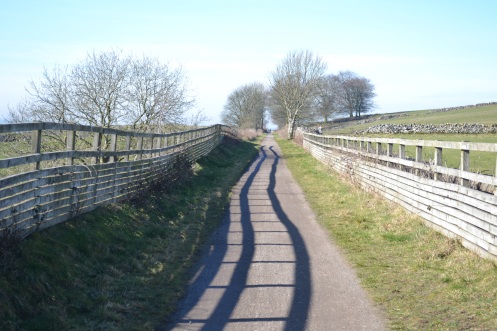
Stone abutments shore up the walls that cross the valleys. At first glance, shadows lend the appearance of long since disappeared railway track.
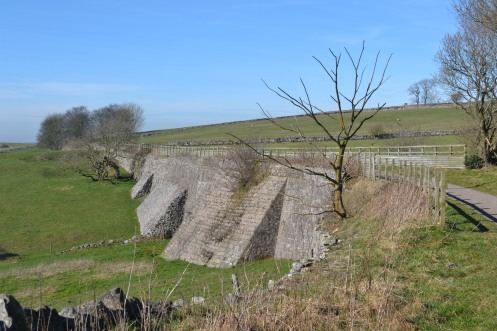
This is very much a cross country route. There are few buildings along the trail. But at Longcliffe the Station House – once two houses and stables – is a reminder that this was once a busy line.

If you want a good walk on a sunny day, you can’t beat the HighPeak Trail.
Tucked away in a suburban looking street, in an unlikely corner of the country, is one of the most diverse and original art galleries in France. The Louvre Lens Museum, an extension of the Louvre in Paris, is sited in an old coal mining town as a step towards bringing culture to the masses. The gallery is remarkable not only for the quality and variety of its contents, but also for the way in which the works are displayed.
Everything is to be seen in one great hall, with displays mounted not on the wall but in free standing units dotted around the room.
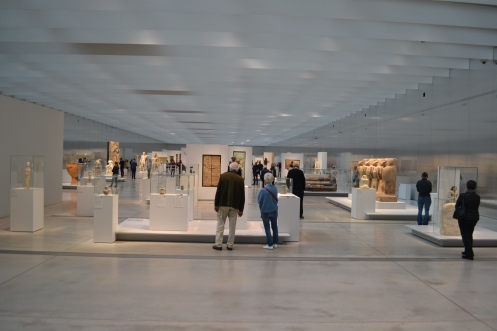
The period covered ranges from 4,000 years BC to the nineteenth century. A group of baboons, from an obelisk at the temple of Luxor, hunch their shoulders like a quartet of quarterbacks.

An archer of the Royal Guard, at the Palace of the Persian King Darius 1, bears a quiver of arrows like a set of golf clubs.
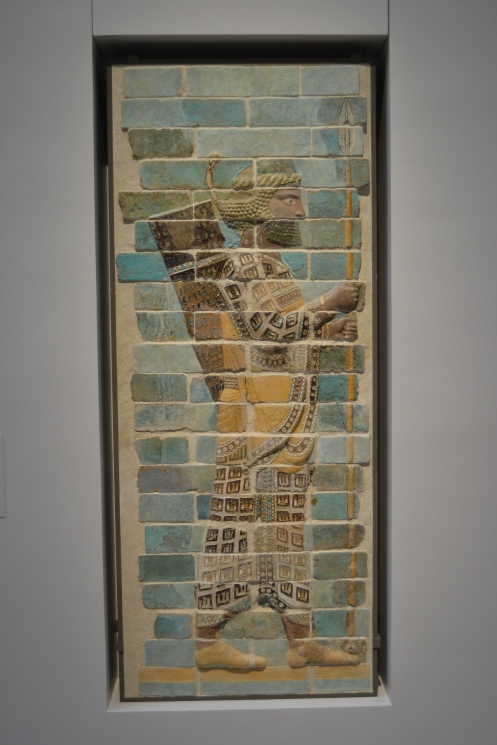
A hatted procession of the Armenian community to Isfahan, Iran, wave their pennants and crosses.

From the ruins of Pompeii, a beguiling woman feeds a fawn.

A princess from the Este family, lost in thoughts, is portrayed by Pisanello.
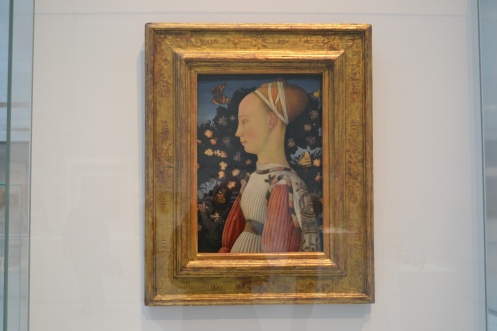
A wary looking Madonna and Child, surrounded by Five Angels, are captured by Botticelli.

We visited on a Sunday morning and there were no crowds. Admission is free, and there is a free car park just down the road.
For many visitors, Annecy is not so much a destination as a stopping off place – or a detour – on the way to somewhere else. Signs on the autoroute point the way to Geneva and Turin, and no expense has been spared in building the road. When it doesn’t go straight through the mountain ……

……… it clings to the edge in a series of viaducts and tiered flyovers.
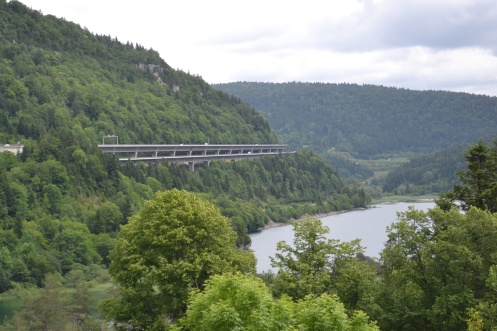
The big attraction of Annecy is its lake. Despite the mid June heat, it was too cold for a swim, although that didn’t deter a few brave characters.

You can also hire a boat …………….
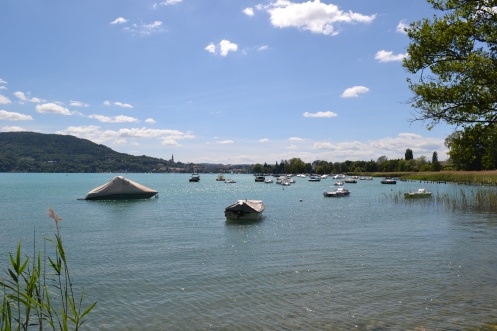
………… or a bike. A flat cycle path hugs the west bank of the lake and, apart from a few Chris Froome wannabees, most cyclists take the path at a leisurely pace.
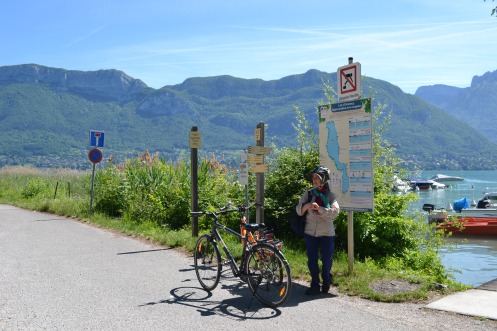
Cycling around the lake affords an ever changing view of the surrounding mountains.
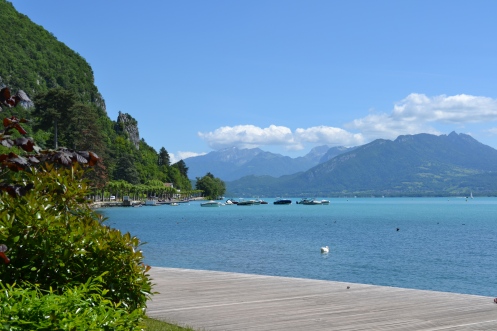
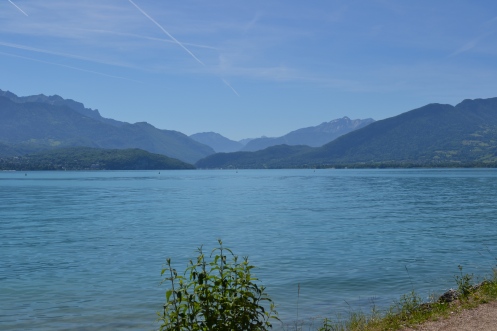
For historical sites, you need to visit the old town. Named the Venice of the Alps by over-imaginative travel writers, Annecy boasts a short length of tree lined canal.

The River Thiou, one of the shortest in Europe (at 3.5km), winds past rows of historic buildings and is a magnet for tourists.

Wedged into the middle of the river is the old prison, the Palais de l’lle. Apparently it is one of the most photographed sites in France but, when we visited, its best side was covered in scaffolding, so you’ll have to make do with a view of its rather drab rear.

Hidden down an unassuming looking street is an even more modest looking cathedral.


Perhaps of greater interest is the church of St Maurice. At the east end is a curiosity, a most realistic trompe l’oeil painting of the tomb of Philiberte de Monthouz. Just why it was decided to create a memorial of him in a painting rather than an actual tomb remains unclear.
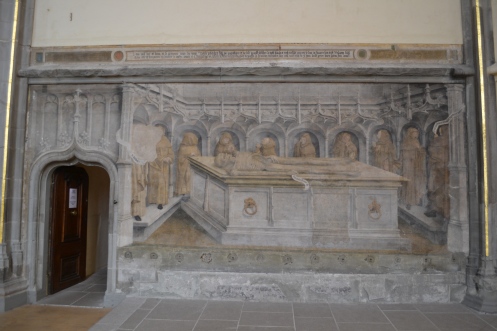
When visiting Annecy, it’s worth taking a trip into the mountains. Thones is just a short drive from the lake.

Even on a hot day in mid summer, snow can be seen on the mountain tops behind the church.
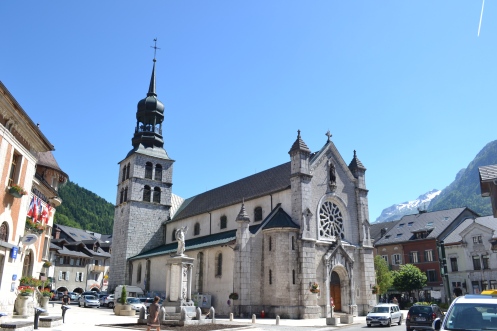
Annecy is worth more than a stop over. There is plenty to see and do and, while the city may be small, the location is truly beautiful.
Turin may not be your idea of a tourist destination, but it took me by surprise. For a start, there’s the river. Seen from the Ponte Vittorio Emanuele on a sunny day, it looks quite beguiling.

Cross the road from the river to reach the vast Piazza Vittorio Veneto, with its trams and scuttling traffic.

Then follow the road – the Via Po – to the grim faced Palazzo Madama.
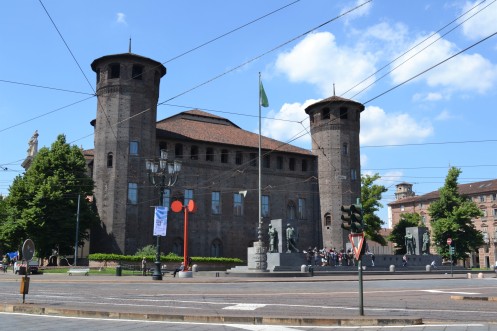
Now we’re approaching real tourist territory. Cross yet another piazza – the Piazza Castello …………

……………… to approach the Palazzo Reale. Within this sprawling complex, one glittering and gaudy room leads to another.
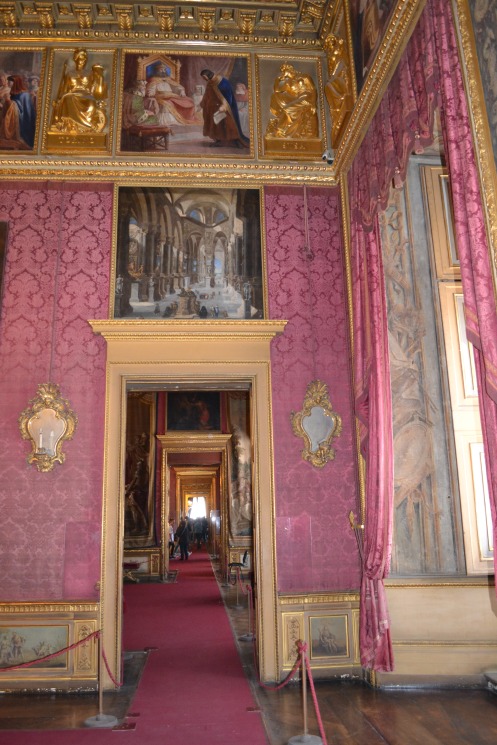
The Throne Room, with its swags and chandeliers may be the brightest ………
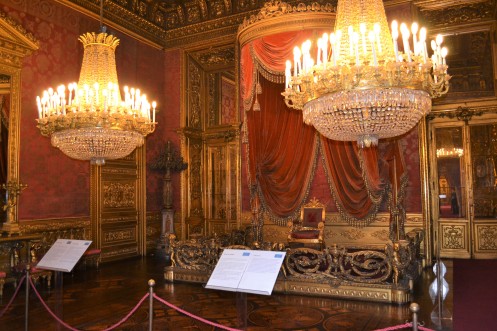
……… but the armoury is the room that draws the crowds, with armour plated knights sitting astride their stuffed mounts.

When you’ve had enough of all this bling, cross the courtyard to the Galleria Sabauda.

This art gallery has its fair share of rather forgettable hangings, but there are some real gems. I particularly liked Rogier van de Weyden’s panels, A Donor praying and The Visitation.

In contrast, a couple of fifteenth century angels, by Giovanni da Fiesole, float through the air fluttering their golden wings.
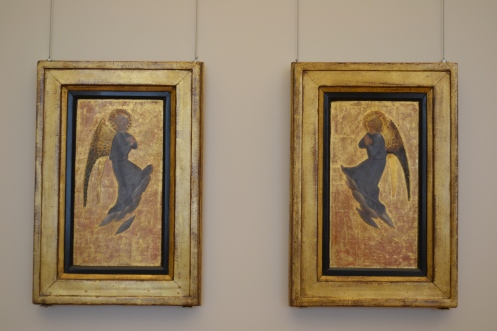
Meanwhile, down in the basement, the archaeological museum is crammed with the broken remains of Turin’s Roman past.

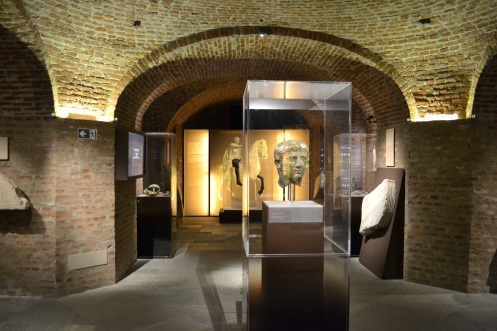
Around the corner from the museum complex is the Cathedral of St John the Baptist.

For a cathedral it is quite modest in terms of size, in stark contrast to its international reputation as home of the Turin Shroud. A replica of the shroud draws the curious crowds, but I preferred a modest and uncontroversial fresco above a doorway.

Whatever the weather, getting around in Turin is made easy by the miles of covered walkways.
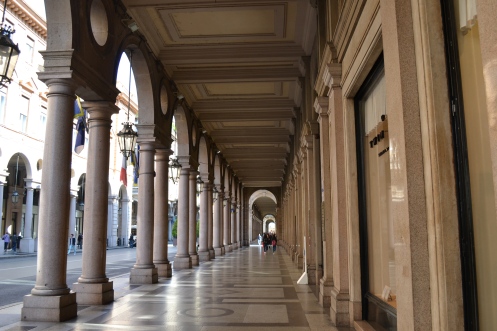
There’s a lot more to see in this bustling city, but that is quite enough for one day.
Reims Cathedral is where for centuries the kings of France were crowned. More exactly, most were crowned there. Among the exceptions was Louis VI who chose Orleans fearing that his half-brother Philip would stop him from entering Reims. When the Archbishop of Reims objected, claiming his right to perform the coronation, he was overruled by Louis who said that as king he could decide the matter for himself.
In any event, Reims – rather than Paris – may seem an unlikely place for a coronation, but when the archbishop of Reims baptised Clovis around 496 A.D. he set a powerful precedent. Today, the rather squat looking cathedral is hidden amongst the city’s shops and offices. Approaching it from the river, the west front suddenly comes into view for the first time as you turn into Rue Libergier.

The partially cleaned west front is a mixture of pinks and greys. A smiling angel looks particularly pleased about something.

A finely traced king and queen, surrounded by angels with outsize wings, perch beneath the west window.
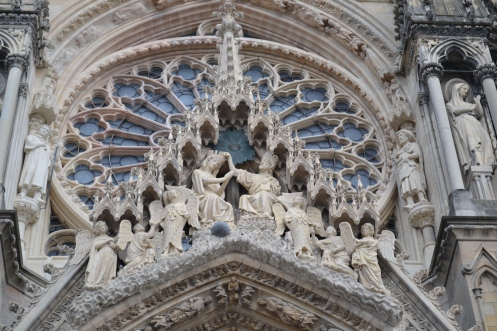
Inside the cathedral, the great and the good, strike important looking poses in their stone niches.


Above them, coloured glass makes the most of whatever sun there is on a chilly Spring afternoon.

In the nave, a suspended chandelier serves to accentuate the sheer height of the cathedral.
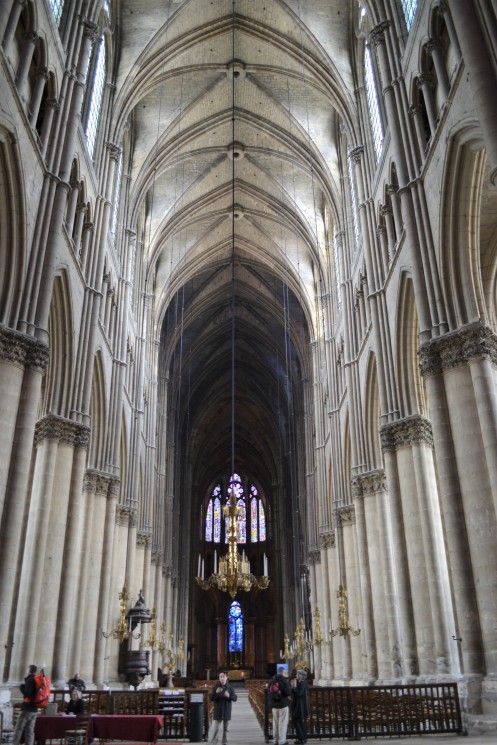
Along the aisle, information boards record the cathedral’s history, but I struggle with the French and lose much of their meaning.
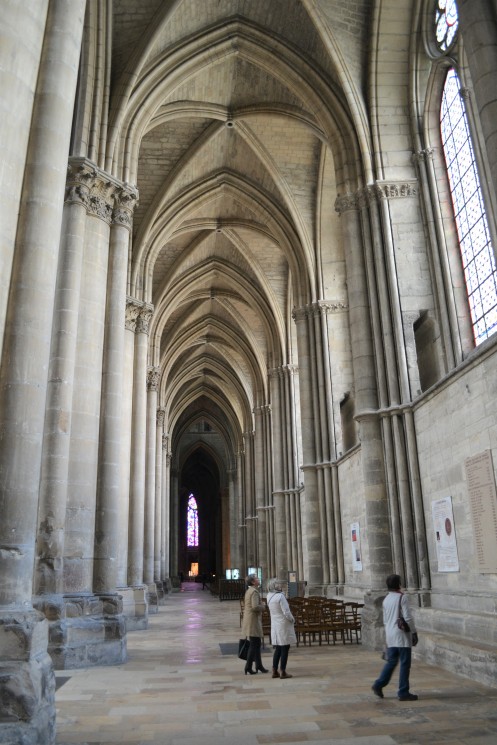
The cathedral itself is bare of treasures, but at the adjacent Palace of Tau the treasury is on display. On the Reliquary of the Resurrection, a couple of dozy guards are oblivious of Christ who is stretching his arms in triumph.

A crowded galleon, with finely traced rigging – The Reliquary of St Ursula – competes for attention with a bejewelled chalice and goblet.

Most people heading south east down route A26 don’t give Reims a second glance. They don’t know what they are missing.
Anglesey Abbey is a confusing name. It is neither in the Welsh island of Anglesey (but on the outskirts of Cambridge in England) and there is not much trace of the medieval abbey. The site of the priory, which was dissolved in the sixteenth century, is now occupied by a rather grand National Trust house which retains just a few features of the original building.
When we visited in February, the house was shut for the season, but no one really visits Anglesey Abbey just to see the house. The grounds are extensive, and on a cold overcast day the Winter Garden formed a winding corridor of colour. The reds and yellows of dogwoods contrasted with bare branch deciduous skeletons.

Pink petal blossom lit a curving corner.

Splashes of snowdrops lined the path.

Sheltered by a mass of evergreen, colours competed for attention – pinks, oranges and bright yellow forsythia.
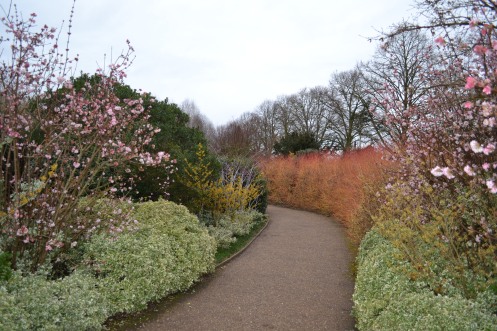
At times, the path became a blur of colours and shapes.
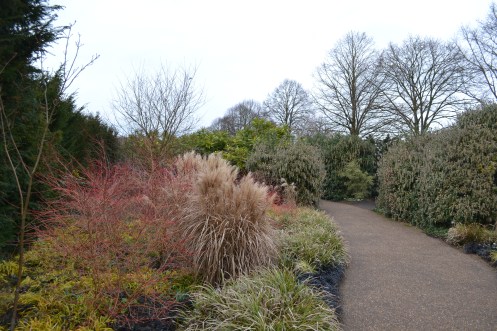
Anglesey Abbey is famous for its snowdrops. In open ground they formed a carpet albeit one that was rather threadbare in places.

More imposing were a crowd of silver birches jostling for attention.

Beyond the Winter Garden, the manicured river bank leads to a mill house, the doors of which had been shut well before the official closing time.

Much of the Abbey’s gardens will not become alive until Spring gets under way, but that’s a visit for another day.
Tucked away in an unfashionable corner of Cheshire, in North West England, a network of waterways forms a fragment of the country’s industrial heritage. Adjacent to the now sleepy town of Ellesmere Port, the Manchester Ship Canal begins its stately progress from the Mersey Estuary to Manchester. Today, a solitary freighter is a reminder of busier days.

Along the canal, squat cooling towers and pinnacle chimneys belching streamers of smoke present an unpromising scene in greys and blues.
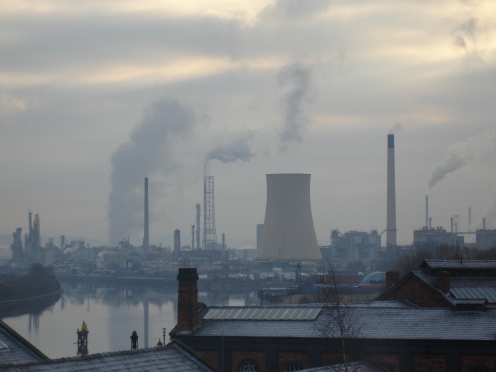
Closer to hand, a sculpture of anchors surmounts the pavement. But, out of view, a section of brick pavement has been summarily dug up and removed by opportunist thieves.
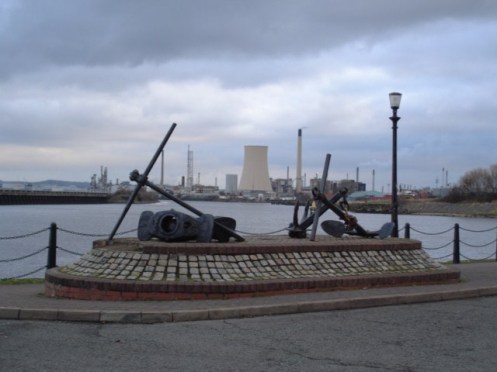
Approaching the Irish Sea, a ferry chugs across the River Mersey from the Liverpool dockside to Birkenhead.

At the Albert Dock, the shuttered doors of the Great Western Railway terminal building are overseen by glass fronted offices and the stately dome of the Port of Liverpool Building.
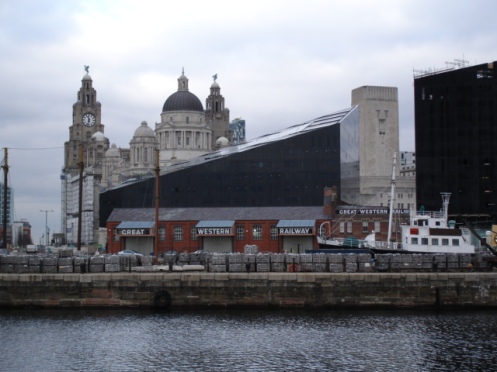
Meanwhile, back at Ellesmere Port, you will find the Ellesmere Canal. It was planned to link the Rivers Mersey and Severn, connecting the port of Liverpool with the manufacturing centres of the West Midlands. Rising costs and a lack of traffic scuppered the plans, and those sections that were built lost their identity as they became incorporated into other canals. But today you can take a leisurely walk around the dock basin.
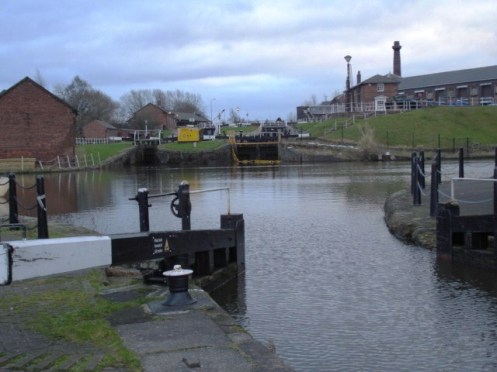
On open days, heritage is brought to life at the National Waterways Museum, where steam powered working boats are manhandled by high visibility enthusiasts….
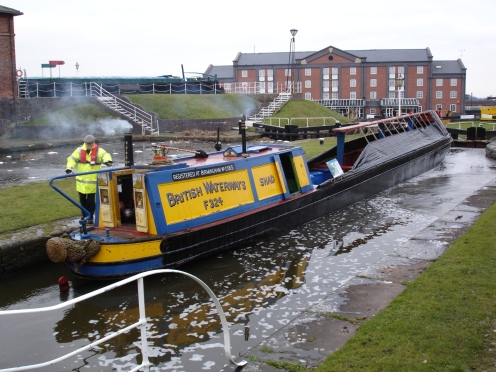
… and manoeuvred through the narrowest of locks.

Stepping aboard the tiny living quarters of Ferret No. 58, where a whole family would have lived in the closest of proximity, you glimpse the unromantic realities of life on a working boat.
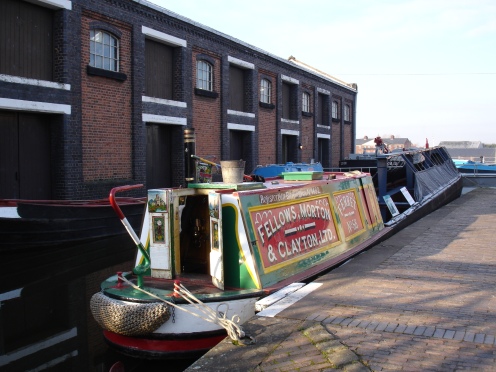
Even on the coldest of days, this is a corner of England that is well worth a visit.
There’s no escaping the lions when you visit Modena Duomo. Entering the Piazza Grande, past the massive Ghirlandina bell tower, you approach the south door of the cathedral. Guarding the entrance are two vigilant lions, supporting on their backs the piers of the portico.

What many visitors fail to notice is that, if you stand back and view the portico from a distance, you will see another lion surveying the city from the roof. Look even more carefully and you’ll see that he is holding a cross.

Walk around to the west door and two more lions, with long shaggy manes, are stretching their legs in the sun. By their looks, they appear to be brothers of the lion on the roof.

Inside the Duomo, it comes as no surprise to find that the columns of the parapet are supported by four restless looking lions. There is nothing sentimental about them. All four are holding tight to their captured prey.

Meanwhile, outside on the south wall, comic strip carvings recount the stories of Genesis. A shame faced Adam and Eve try to hide their embarrassment after picking the fruit from the tree of knowledge.

On the next panel, Cain cudgels his brother Abel senseless.

There’s a lot going on at the Duomo if you take the time to look carefully.
Tours and Angouleme in France are separated by just over 200 kilometres, but in terms of architectural styles their cathedrals are centuries apart. The Cathédrale Saint-Pierre d’Angoulême is twelth century Romanesque and, although it has been knocked about over the centuries, its facade remains very much early medieval. (Ignore the rather absurd conical tops on the towers, like inverted ice cream cones, which are a nineteenth century addition).

The façade is a reminder to all and sundry of the need for a godly life, with statues of the damned suffering their uncomfortable fate while the pious contemplate the prospect of eternal bliss.
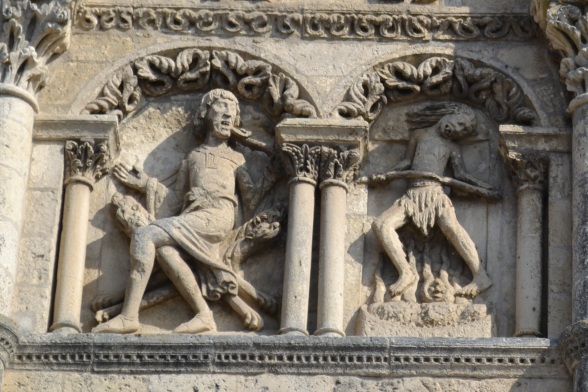
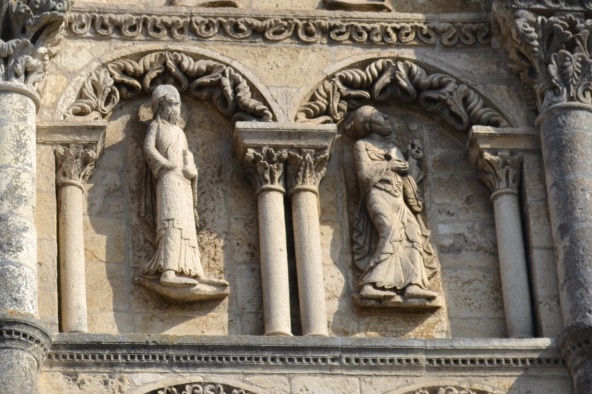
If that’s a bit too serious for you, take a look at St George in his coat of mail riding a charger to slay the fallen dragon. A reclining princess holds up her hands in grateful thanks.
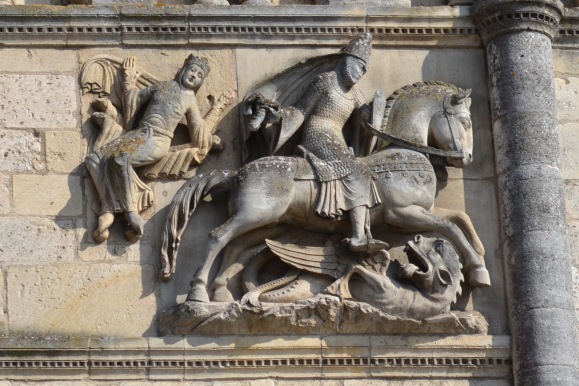
The façade of Saint Gatien’s Cathedral in Tours could hardly be more different. Construction of the cathedral was slow, even by medieval standards, and the building is a mixture of Romanesque and Gothic, but the west front flourishes with fine flamboyant carving. Passers by are confronted not with a parade of the good, bad and ugly, but rather a display of intricate carving and tracery.
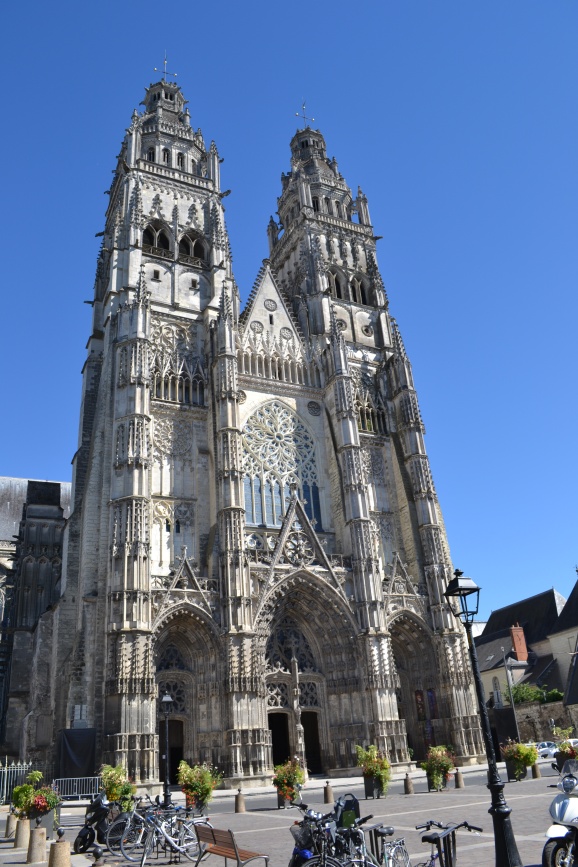
Inside the cathedral, slim gothic piers are interspersed by the rows of windows, with the east end lit by a wall of stained glass.
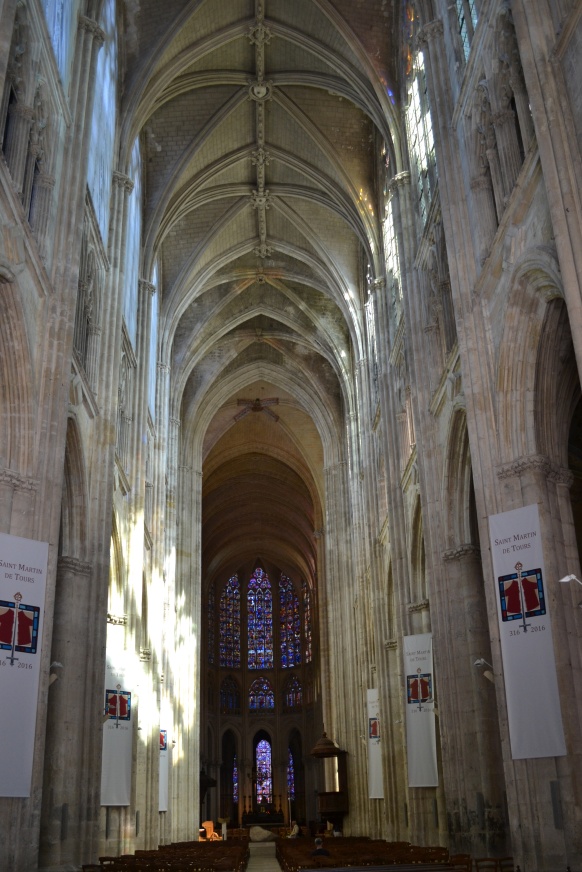
Stained glass also adorns the transepts and west end of the cathedral.


The interior of the Cathédrale Saint-Pierre d’Angoulême is, by comparison, rather squat and stubby, with rounded Norman arches and a low ceiling. Although much refurbished in the nineteenth century, for better or for worse, there is no escaping its early medieval appearance.
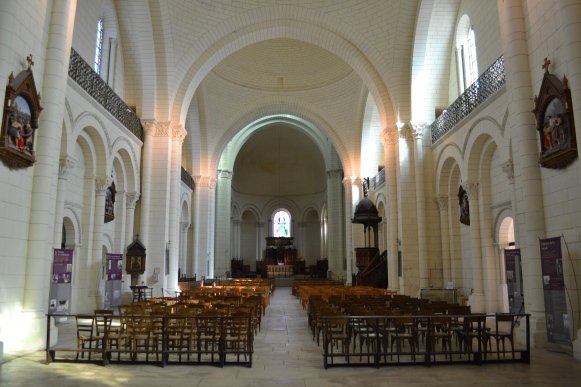
What Angouleme lacks is wall paintings. Tours, on the other hand, has an intriguingly faded fresco of a sword swinging villain about to decapitate a damsel in distress. On a nearby pillar, a lance wielding warrior sallies forth to fight the good fight.
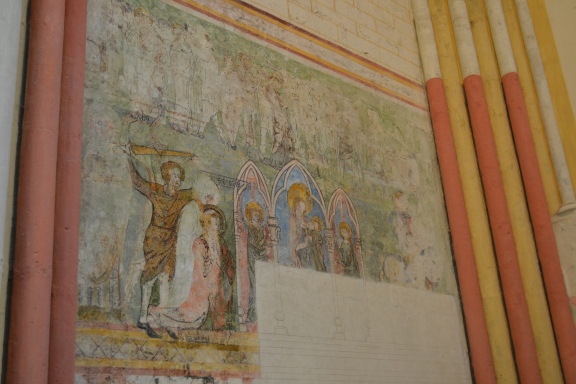

When we visited Tours and Angouleme, both cathedrals were largely empty, perhaps because their cities are too small to attract the tourist hoards. But both cathedrals, in their different ways, merit a visit.
